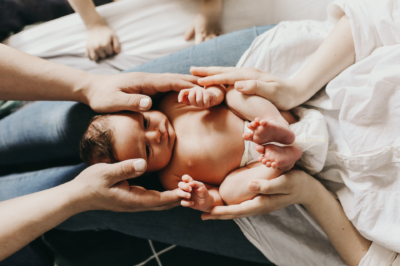Although most women learn to keep track of their menstrual flow, many have no idea how much information about their fertility and reproductive health can be determined by observing daily signs of the body. These signs are known as “biomarkers” or sometimes Fertility Awareness charting (charting your menstrual cycle) is called “the 5th Vital Sign”. It is that important!
Before We Go into the Details, 2 Important Facts to Keep in Mind:
1. Men are mostly always fertile and
2. Women are mostly infertile
By identifying the relatively short period of potential fertile days of the woman, couples can use this information to achieve or avoid pregnancy. Keeping a daily chart can help you know your potentially fertile time. Conversely, if you are trying to avoid pregnancy, it can help you identify when you will ovulate (when the ovary releases an egg) so you abstain from intercourse during the fertile window. This is a true family planning method that can be used for birth control, but is not contraceptive. It respects the natural cycles of fertility and natural infertility that are built into our menstrual cycles.
If you’re thinking about getting pregnant, here is an article I wrote on 9 ways you can optimize your fertility – do these along with charting and you’ll be off to a good start!
The Biomarkers (Signs) that can be Observed & Tracked During Regular Cycles and Irregular Cycles Include:
- Bleeding (days of your period) or other bleeding through the cycle
- Presence or absence of cervical fluid or mucus
- Basal body temperature (bbt) – is the temperature of your body when it is at rest. You want to take temperature at the same time every day as soon as you wake up.
- Changes in cervix and hormone metabolites that can be measured through “at-home” testing
Modern Methods of Charting Fertility are NOT your Great-Grandmother’s Rhythm method!
In our current time, where information available at our fingertips, it is hard to believe that the earliest of the modern natural family planning methods of Fertility Awareness, the Billings Ovulation Method, was only developed in the 1950’s.
Prior to that, in the 1930’s, the “Rhythm Method” was developed – which was very different from modern Fertility Awareness-Based Models (FABM’s) in that it looked back at previous cycles to try to guess when a woman might be fertile in a current cycle. As you can imagine, not that precise!
At that time, it was first discovered that the time from ovulation to the next menstrual period was a relatively stable phase – about 2 weeks. We take this science for granted these days, but at the time these were important breakthroughs.

Here is the Basic Physiology that Drives the Biomarkers of the Fertility Cycle
1. Day 1
The first day of your cycle is the first day you have moderate to heavy bleeding.
2. Early in the cycle
Follicles start to grow under the influence of FSH- Follicle Stimulating Hormone.
3. Usually 1 follicle, but sometimes more, will become the dominant follicle
The granulosa cells of the follicle produce estradiol which rises as the follicle grows.
4. This rise in estrogen stimulates the crypts (glands) within the cervix of the uterus to produce a specific kind of fertile fluid (mucus)
This fluid becomes clear (like egg-whites), stretchy, lubricative and forms channels that allow the passage of sperm into the uterus.
5. This rise in estrogen also thickens the endometrium (the lining of the uterus)
6. A surge of LH- Luteinizing Hormone- triggers the follicle to rupture, releasing the Ova (egg) to be picked up by the fallopian tube.
Ovulation predictor tests often monitor rising estrogens and the surge of LH. Sperm meet the egg in the distal fallopian tube for fertilization.
7. With ovulation, Estrogen levels fall and Progesterone rises
The remains of the follicle become the Corpus Luteum, which produces both estradiol and progesterone after ovulation. The rise in progesterone causes a rise in basal body temperature as well as a change in the cervical fluid, becoming thick again. Progesterone also changes the endometrial lining, making it a nice nest for a baby to implant and grow. More recently, PROOV sticks can be used to monitor for the presence of progesterone after ovulation.
8. The egg can only be fertilized for 12-24 hours after ovulation
If not fertilized, it will be reabsorbed by the body.
9. The fertile window also includes 5 days prior to ovulation
During this time the sperm can survive in the cervical fluid and the fallopian tubes- awaiting the arrival of the egg.
10. If no pregnancy occurs, the corpus luteum stops producing hormones in 10-17 days
This is usually about the same length each month for an individual woman. The endometrium then becomes unstable and sloughs off, causing the menstrual flow.
11. If the egg is fertilized, HCG- Human Chorionic Gonadotropin- is produced.
HCG stimulates the corpus luteum to continue to produce estradiol and progesterone, stabilizing the endometrium and the menstrual flow does not occur. The embryo implants into the uterine wall at around 9-11 days after ovulation. Blood tests can detect HCG as early as that and today’s over-the-counter pregnancy tests are quite sensitive and can usually detect HCG even before the menstrual flow is missed.
Besides family planning, charting your cycles can be a great way to monitor your gynecological health. Knowing what is going on hormonally can give you insight into some of your physical as well as emotional symptoms as they change through the month.
3 Types of Fertility Awareness Based Methods (FABM’s) that are Taught Using Evidence-Based Guidelines Include:

- Ovulation Methods– such as Creighton Model FertilityCare System, and Billings Ovulation Method– track your cycle including bleeding, dryness and checking your cervical mucus only.
- Sympto-Thermal Methods– such as “Couple to Couple League”, SymptoPro, and many diocesan programs-sometimes called “double check” methods- track bleeding, dryness, cervical fluid and basal body temperature charting. Sometimes changes in the cervix are observed optionally.
- Sympto-Hormonal Methods– such as Marquette also add monitoring of hormone metabolites (estrogens and LH) using a monitor to observations of bleeding, dryness and cervical fluid sometimes.
Image credit: FACTS www.factsaboutfertility.org
There has been a proliferation of smart-phone “apps” in recent years, but be aware that many of them are basically “period trackers”, have unclear algorithms behind them and do not necessarily give real-time information on potential fertility. Sticking to apps of established, evidence-based methods is your best option. The use of these is best done in conjunction with learning the method from a trained teacher.
If you are not feeling well or you notice changes in your cycle, physicians trained in these methods can help guide a medical evaluation.



 Sleep During Pregnancy – Getting a Safe & Good Night’s Sleep
Sleep During Pregnancy – Getting a Safe & Good Night’s Sleep






Leave a Reply